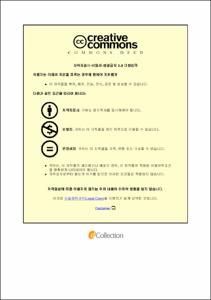고령여성의 아쿠아로빅 Noodle-Riding 동작 숙련도에 따른 역학변인 비교 분석
- Alternative Title
- A Comparative Analysis of Kinematic Variables Depending on Skill Levels of Aquarobics Noodle-Riding Exercise in Elderly Women
- Abstract
- A stationary bike ride and a water exercise are recommended for elderly people with osteoarthritis or a healthy knee-care regimen, and the best way to do both is noodle-riding. The purpose of this study was to analyze the difference between the experienced and the unskilled in the underwater noodle riding movement and to present the ideal posture and to propose the type of motion that the range of the hip joint use is larger than the existing motion. As a result of an experiment with 10 unskilled and 10 skilled people aged 70-75 with less than one year of experience participating in Aquarobics. First, the elapsed time between the skilled and the unskilled persons was long in the P2(that raise your knees and send your heel forward) and P4(to pull water up and send back heel), and statistically significant. Second, there was a statistically significant difference in hip joint(E1, E3, E6), knee joint(E1, E3, E5, E6) and ankle joints(E1, E4, E5, E6) between skilled and unskilled. Third, hip joint, knee joint , and ankle joint were significantly higher in the skilled. Fourth, the operating time of the Basic(P1, P2) and, Swing(P3, P5) was long, and there was a statistically significant difference. Fifth, the hip joints were statistically significantly higher in the Swing(E1, E5, E6) and Basic(E3). Knee joints were statistically significantly higher in Swing (E1, E2, E5, E6) and Basic (E4). Ankle joints were statistically significantly higher in Basic motion in the E1 event. Sixth, There was a statistically significant difference in the ROM of the swing in the hip joint and basic in the knee joint.
The conclusion based on the above results is as follows.
1. In order to perform accurate and efficient noodle-riding operation, prepare the posture with maintaining the hip, ankle angle of about 100° and knee joint at about 84°, increasing the time required for the P2 phase, pulling water by using the calf and foot sufficiently I repeat the rotation movement as pulling.
2. In the case of the skilled person, the swing motion is actively used in the E3 and E5 events to create a range of motion of approximately 90° using the hip flexor and extensor muscles.
- Issued Date
- 2018
- Awarded Date
- 2018. 8
- Type
- Dissertation
- Publisher
- 부경대학교
- Alternative Author(s)
- Sung Hee Jung
- Affiliation
- 부경대학교 대학원
- Department
- 대학원 체육학과
- Advisor
- 김용재
- Table Of Contents
- Ⅰ. 서 론 1
1. 연구 필요성 1
2. 연구 목적 5
3. 연구 문제 6
4. 연구 제한점 7
5. 용어의 정의 8
Ⅱ. 연구방법 10
1. 연구대상 10
2. 측정기구 및 용도 11
3. 측정항목 12
4. 실험방법 13
가. 수중 촬영 14
나. 신체분절의 각도 정의 18
다. Noodle-Riding 동작의 국면 및 구간 설정 19
5. 자료처리 분석방법 21
가. 자료수집방법 21
나. 통계처리방법 21
Ⅲ. 연구결과 22
1. Noodle-Riding 동작 시 소요시간 22
2. Noodle-Riding 동작 시 하지관절 각도 24
가. Noodle-Riding 동작 시 고관절 굴곡각도 변화 24
나. Noodle-Riding 동작 시 슬관절 굴곡각도 변화 26
다. Noodle-Riding 동작 시 족관절 굴곡각도 변화 28
3. Noodle-Riding 동작 시 하지관절 가동범위 30
가. Noodle-Riding 동작 시 고관절 가동범위의 차이 30
나. Noodle-Riding 동작 시 슬관절 가동범위의 차이 32
다. Noodle-Riding 동작 시 족관절 가동범위의 차이 34
4. 숙련자의 Basic과 Swing 동작 시 소요시간 36
5. 숙련자의 Basic과 Swing 동작 시 하지관절 각도 39
가. Basic과 Swing 동작 시 고관절 굴곡각도 변화 39
나. Basic과 Swing 동작 시 슬관절 굴곡각도 변화 41
다. Basic과 Swing 동작 시 족관절 굴곡각도 변화 43
6. 숙련자의 Basic과 Swing 동작 시 하지관절 가동범위 45
가. Basic과 Swing 동작 시 고관절 가동범위의 차이 45
나, Basic과 Swing 동작 시 슬관절 가동범위의 차이 47
다. Basic과 Swing 동작 시 족관절 가동범위의 차이 49
Ⅳ. 논 의 51
1. Noodle-Riding 동작 시 소요시간 51
2. Noodle-Riding 동작 시 하지관절 각도 52
3. Noodle-Riding 동작 시 하지관절 가동범위 55
4. 숙련자의 Basic과 Swing 동작 시 소요시간 56
5. 숙련자의 Basic과 Swing 동작 시 하지관절 각도 57
6. 숙련자의 Basic과 Swing 동작 시 하지관절 가동범위 59
Ⅴ. 결 론 60
참고문헌 63
- Degree
- Doctor
- Files in This Item:
-
-
Download
 고령여성의 아쿠아로빅 Noodle-Riding 동작 숙련도에 따른 역학변인 비교 분석.pdf
기타 데이터 / 1.01 MB / Adobe PDF
고령여성의 아쿠아로빅 Noodle-Riding 동작 숙련도에 따른 역학변인 비교 분석.pdf
기타 데이터 / 1.01 MB / Adobe PDF
-
Items in Repository are protected by copyright, with all rights reserved, unless otherwise indicated.